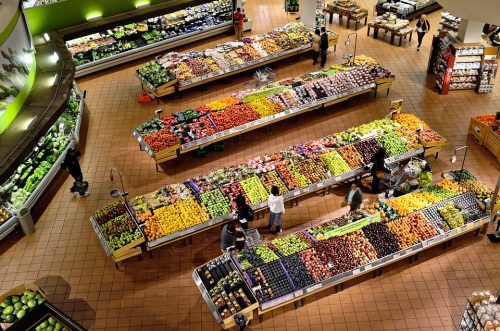
Although Chicago has no shortage of markets, from the Lincoln Park Farmers Market to the city’s longest running at Daley Plaza, and dozens more open through October (check out chicagofarmersmarkets.us for more information), when it comes to regular shopping and picking the best produce, grocery stores corner the market and they don’t offer the best goods.
The demand for constant availability of produce has created a quantity over quality situation that writers like Julia Belluz and Javier Zarracina of Vox address: “much of standard produce — the apples, tomatoes, and bananas sold year-round in grocery stores — is bred and selected for size and durability on long journeys, not flavor.”
However, with the right strategy, better fruits and vegetables can be chosen from what is available. Shoppers can avoid the disappointment of bringing home overripe, mushy, flavorless produce, by choosing more thoughtfully. Those supermarket apples are not all the same.
Organically or conventionally grown, understand what distinguishes good produce from the best produce in order to pick the best of the bunch and make the most of your money.
Call your local grocery store to ask when produce comes in. Often, stores stock up on days they know they will be busy, like Saturdays. Without knowing when the produce has been delivered, available products might already be a few days old when you purchase them, leading to a shorter life in your pantry or fridge.
When it comes to selecting produce, avoid picking just the apple of your eye. “When buying produce, use all senses: sight, sound, taste, smell, touch,” said Nathan Bochler, a former executive chef who now works for Specialty Produce, a California restaurant supplier. Involve all the senses to find the overall best fruit. Save the primary taste test for later and you should not be disappointed.
Overall, look for fruits heavy for their size and darker in color.
Apples should be firm, fragrant, and free of bruises or cuts. Large and small apples can be equally as delicious, as size has more to do with growing process than the flavor of the apples. The true key to keeping the best apples is to keep them cold, and keeping them stored in a separate bag or drawer from other fruits.
The best ripe avocados yield to firm pressure when gently squeezed in the palm of your hand. These are considered ready-to-eat. Their color should have turned from green to dark purple. Pick slightly greener avocadoes to eat in a few days, but eat ripe ones the day of. Past ripe avocados feel mushy to the touch and often have dark indentations on the skin. Cut, ripe avocado should be stored in the refrigerator for a day and, to avoid browning, an acidic agent like lemon or lime juice can be added.
Even perfect looking bananas can seem to turn soft and overripe all too quickly. Choosing bananas that are slightly green near the stem ensures the fruit inside is near perfection, and they will last longer on your counter. These bananas are great to eat with a firmer texture, or wait for brown specks to appear to indicate ripeness.
Small or medium strawberries tend to be denser and more flavorful than bigger berries. Select strawberries with an even color, free of any white areas near the stem.
Watermelons should feel heavy and dense. But picking the best watermelon primarily depends on its field spot, the yellow spot that indicates where the watermelon was laying on the ground. According to the blog Fifteen Spatulas, the field spot should be a yellowish creamy color. The darker the color, the longer the watermelon stayed on the vine to sweeten and ripen. If the spot is white, or nonexistent, it indicates an underripe watermelon. Cut watermelon should be stored in the fridge.
Read about what grows seasonally and how to pick the best of your favorite fruits and vegetables. Just these quick Internet searches can save you any sort of doubt when it comes to picking the most enjoyable produce at the supermarket.







